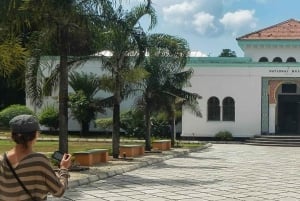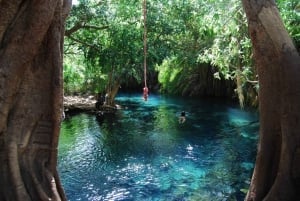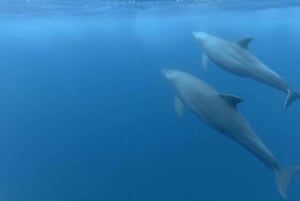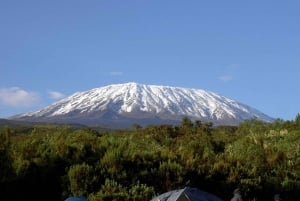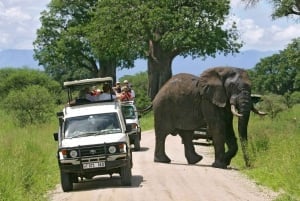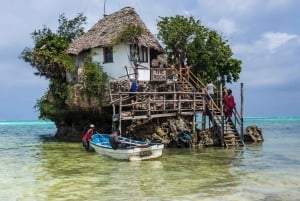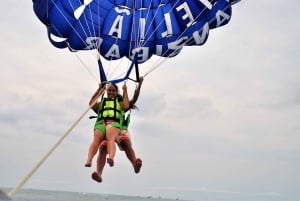Tanzania Regional Info
"KARIBU" is Swahili for "welcome", and is the first friendly word most visitors will hear on arriving in Tanzania. Situated in East Africa, bordering & Uganda, Tanzania is legendary for its wildlife, mountains, sandy white beaches, friendly people and political stability. While on safari in Tanzania there is something to do for all ages; you can either go snorkelling or scuba diving off the coasts of mainland Tanzania and the islands of Zanzibar, Pemba and Mafia; climb the highest peak in Africa; visit a cultural village to learn about the fascinating Maasai; go fishing in ancient freshwater lakes, discover the unique wilderness sanctuaries where huge herds of animals can be seen; or honeymoon in a romantic villa on pristine white beaches. And these are only a few of the options mentioned available for visitors to do!
General Overview
Tanzania is a vast land of contrasts ranging from enriching cultures, diverse landscapes and teeming species of wildlife to historical sites and relaxing towns. Located south of the equator and on the coast of the Indian Ocean, Tanzania is East Africa's largest country. The country offers several world renowned attractions including the highest mountain in Africa, Mount Kilimanjaro; in Zanzibar discover idyllic palm-fringed beaches, pristine coral reefs and the historic Stone Town; and famous wildlife sanctuaries that include Ngorongoro Crater and the endless plains of Serengeti National Park.
Wildlife
Tanzania boasts of national parks, game reserves and conservation areas where countless animals, birds and insects are to be found. In the west, bordering Lake Tanganyika, discover the Mahale Mountains National Park and Gombe Stream National Park, home to the chimpanzees, made famous by British explorer Jane Goodall. In the south is the Selous Game Reserve, well known for large herds of elephants, and the Mikumi National Park, popular for the education of students studying ecology and conservation. Last but not least, in the north, visitors can explore a number of smaller national parks including the breathtaking Ngorongoro Crater and Serengeti National Park. Ngorongoro Crater is a wordwide famous conservation area where Maasai herdsmen and wildlife coexist in a natural setting. Serengeti is renowned for the migration of millions of wild animals on an annual exodus north, which can be viewed either from the back of a luxury 4x4 safari vehicle or high above in a hot air balloon. Whichever way this spectacular sight is seen it will be remembered forever!
Mountains
Mount Kilimanjaro is most highest and famous mountain in Africa. Hatari, a popular movie made in the 1950's starring John Wayne, was filmed at its foothills. People from all over the world climb Mount Kilimanjaro to experience its challenging slopes, rare glaciers and stunning views of Africa. Hiking can be arranged throughout the north and east of Tanzania, as there are various other phenomenal mountain ranges and peaks to be explored. The active volcano of Ol Donyo Lengai can be viewed from the top of Mount Meru, located within Arusha National Park.
Beaches
Tanzania is one of the few places in the world where sandy, white and pristine beaches are found. Discover the endless coastline of mainland Tanzania or relax on the islands of Zanzibar, Pemba and Mafia. Snorkel or scuba dive on the stunning reefs of marine parks and reserves where myriad of colourful fish, turtles and sharks are to be seen.
Lakes
Discover some of the largest and deepest lakes in the world. Large populations of flamingos, storks and herons occupy the soda lakes of Lake Manyara and Lake Natron. In the west, Lake Tanganyika is the world's second deep water lake, and in the northwest, is Lake Victoria, by far the largest lake in Africa. At Ujiji, on the eastern shores of Lake Tanganyika, is where the famous meeting between Henry Morton Stanley and Livingstone took place, and where Livingstone spent so much time.
Cultural
Tanzania has a range of fascinating cultures of which the most famous is the proud Maasai, one of the last pastoral peoples. More than 120 tribes exist, all differing in culture, customs and language. Cultural tours are available to visit local people, either for a short excursion or a longer stay. Learn about medicinal plants, tribal rituals and traditional farming methods.
Historical
Not only has Tanzania a long history of tribal, colonial and Arabic habitation, but one can learn about mankind's first step on the ladder of human evolution by visiting Olduvai Gorge, located within Serengeti National Park. Stone Town, in Zanzibar, offers up many sights and sounds reminiscent of ancient Arab slave traders. Whilst in Zanzibar a visit to the House of Wonders is a must! On Tanzania's southern coast explore that ruins of Kilwa Kisiwani where remnants of Swahili civilization on the East African shores are found.
Towns and Cities
Tanzania is not only rich in history and fantastic attractions, but has lively towns and cities, where there are plenty of activities on offer. Arusha, at the foothills of Mount Meru, is the safari capital of Tanzania where visitors converge, before departing on their journey to the bush or to the mountains. Arusha is also the home to the International Human Rights Tribunal for Rwanda and in the future, a centre for the East Africa Community. The commercial capital is Dar es Salaam, which boasts a huge natural harbour and other interesting places as reminders of its colourful past. Located in the centre of Tanzania is Dodoma, the country's administrative city and where Government meets. The historical town of Tabora was once the meeting point for slave traders, where later became an important mission station. Most of Tanzania's towns and cities thrive on trade and agriculture, but have many interesting sites to fascinate visitors.
No matter what your age there is an exciting adventure for everyone visiting Tanzania.



